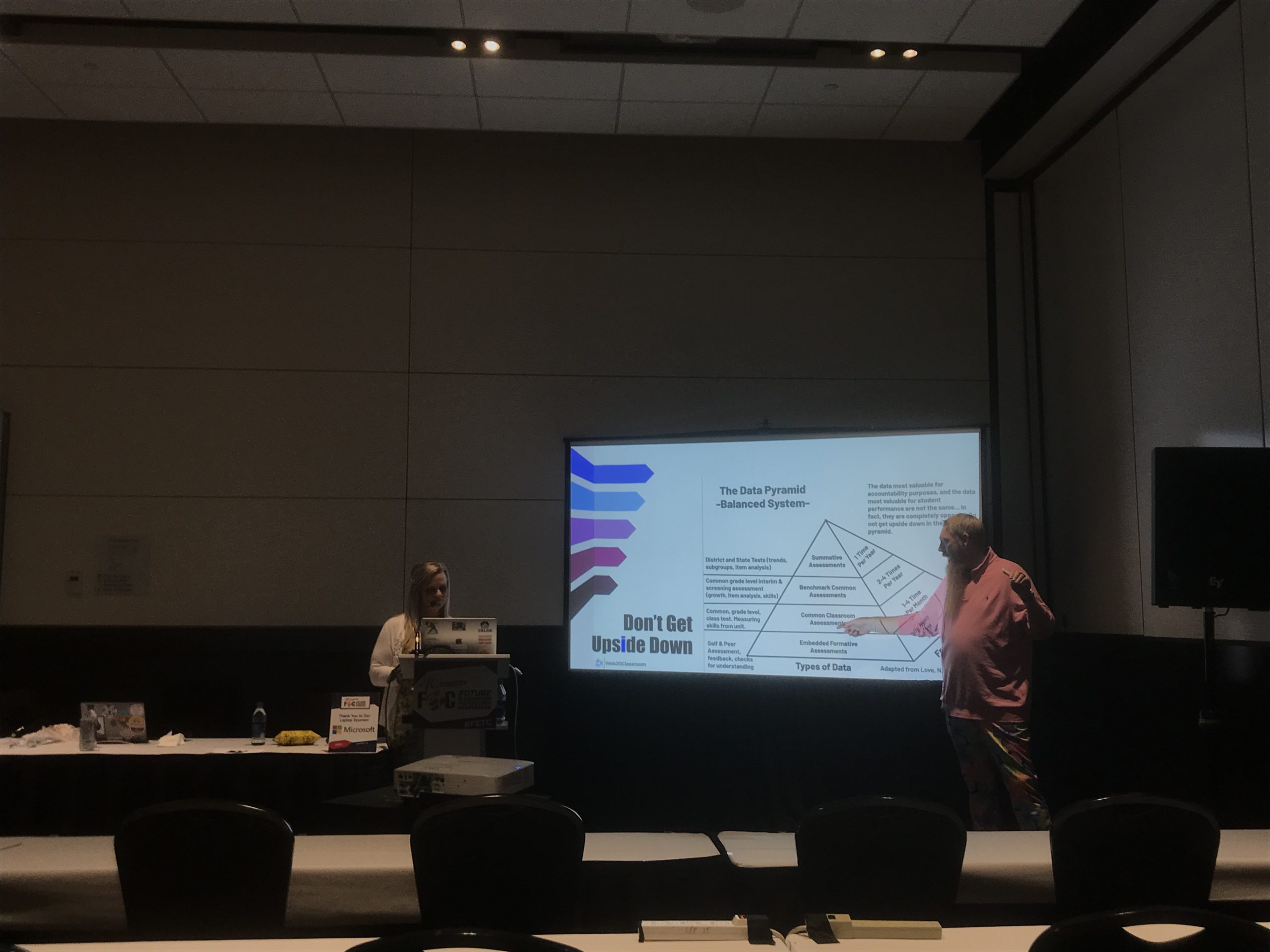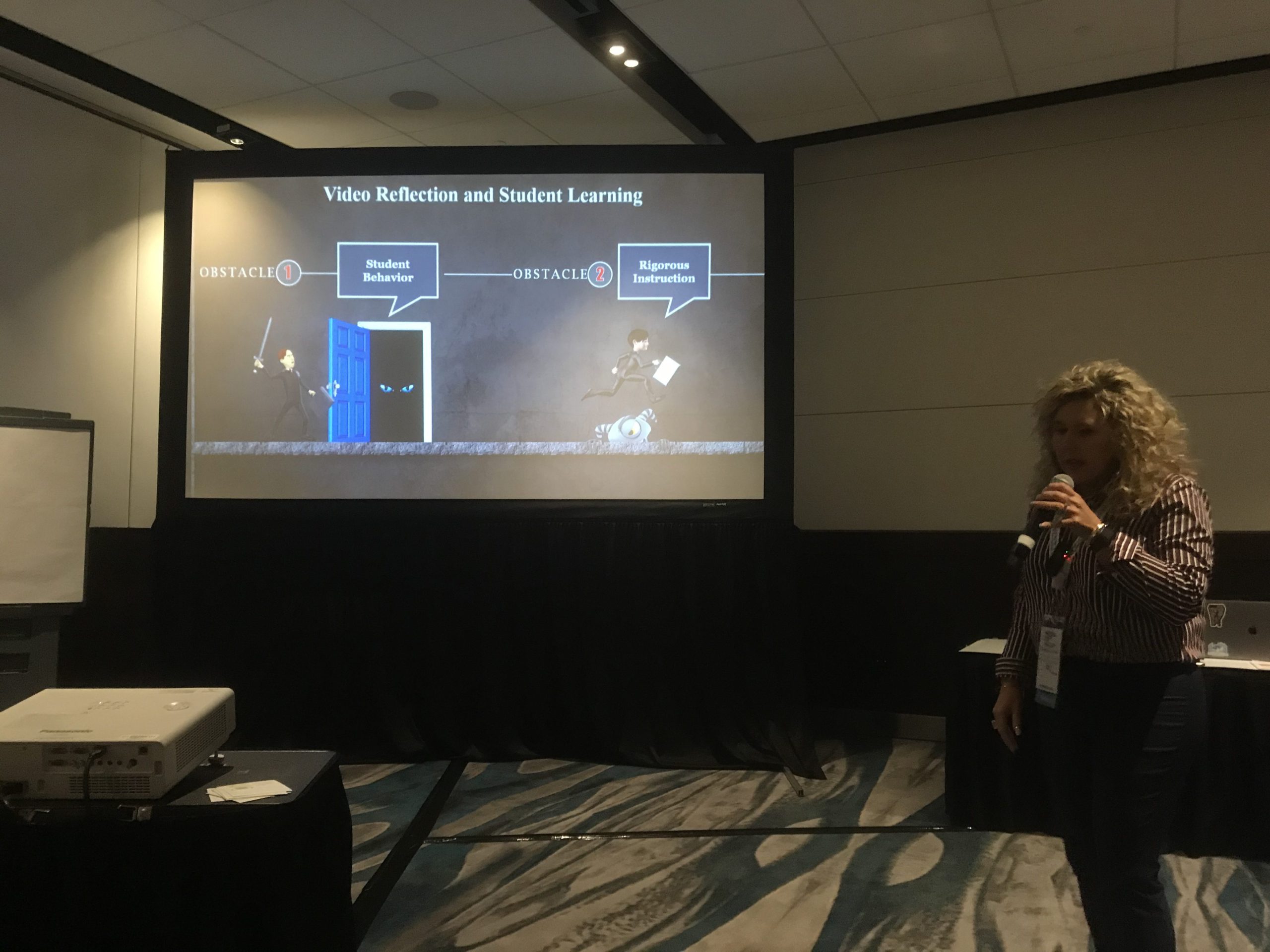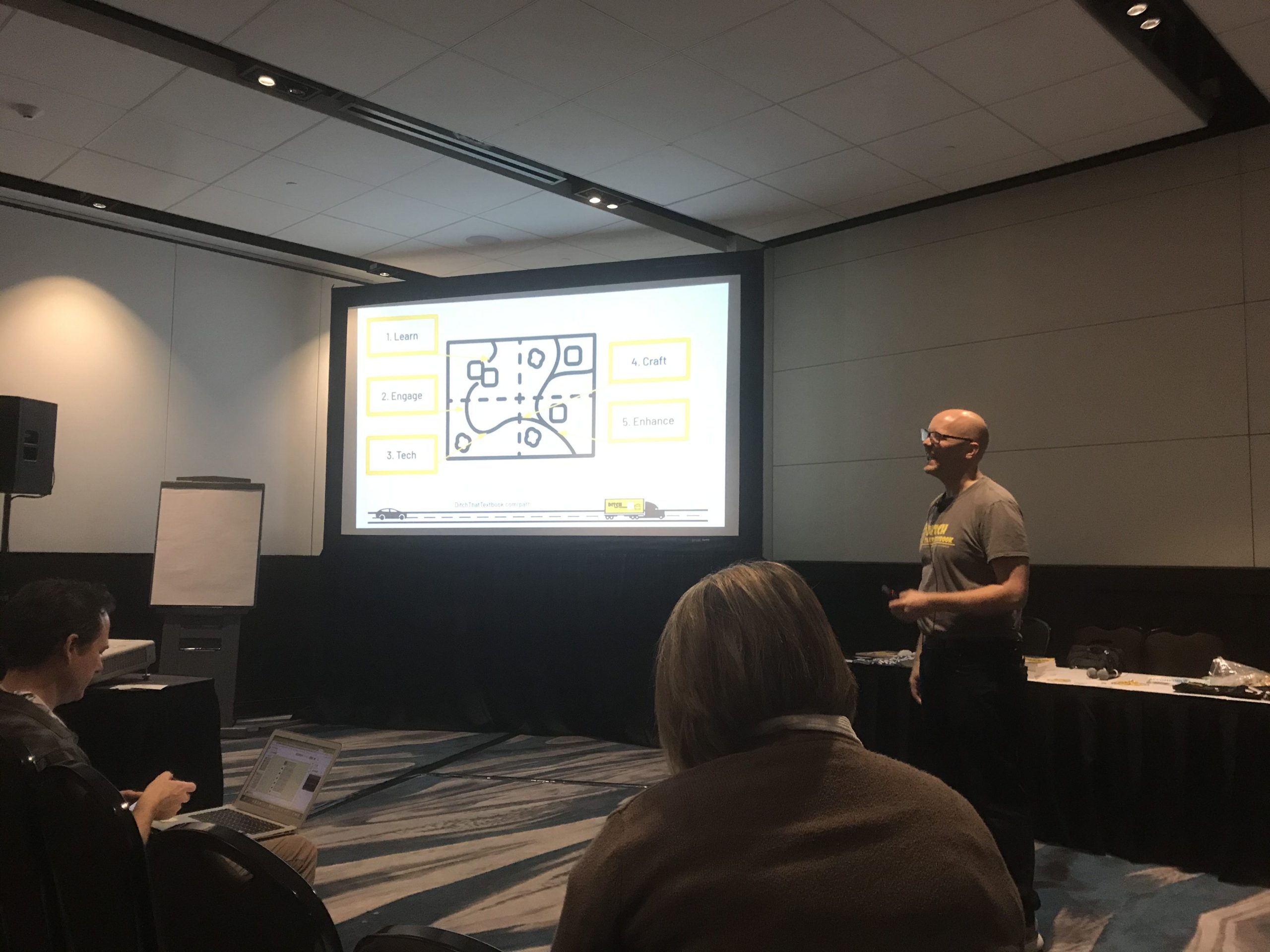
In this all-new track, the Future of Ed Tech Coach sessions at FETC® provided the latest insights and strategies to mentor and train educators.
Presenters covered a wide array of topics—from instructional technologies and personalized learning materials to pedagogical methods. But a major theme revolved around dealing with the ubiquitous challenge that is data inundation. Educators and administrators who can successfully identify the right data to focus on can truly improve teaching and learning.
Optimizing analyses
In “Four Uses to Maximize Learning,” participants learned that schools can keep from drowning in this sea of endless data by optimizing the use of assessments, professional learning communities, walk-throughs and IC Maps. “I want you to walk away with a better understanding of where this data comes from and how to use data appropriately to make the best decisions,” said digital learning and relationship evangelist Steven Anderson of Web20Classroom, a preeminent education and technology group. Here are the session takeaways.
- Districts need to focus more energy on embedded formative assessments as opposed to summative assessments. “Formative assessments drive instruction because they address issues immediately, while summative assessments only take place after a large amount of data has been gathered,” said Anderson.
- The Framework for Authentic Intellectual Work (AIW) gives structure to PLCs, said literacy consultant Shaelynn Farnsworth of Web20Classroom. Teachers first bring useful data about their classes to their PLCs, and then the group grades their effectiveness. “This way, everyone is accountable,” said Anderson. “I have to bring something to the group, and we, as a group, have to talk about it.”
- PLCs that incorporate the AIW framework allow principals to perform more effective walk-throughs, which determine curricula effectiveness. “The problem with walk-throughs is we are using too much data,” said Anderson. “Each walk-through should take no longer than seven minutes. Most walk-throughs require principals to ask 30 questions. That doesn‘t work.”
- The IC Mapping process then identifies the right amount of data to include in walk-throughs. “The problem that most districts face is when you adopt a new initiative, everyone is gung-ho at first, but then sustaining the change is difficult,” said Farnsworth. “IC Mapping helps you sustain it.”

Optimizing video training
In “Transforming Teachers With Video-Reflective Practices,” two administrators from Newton County Schools discussed security cameras that teachers originally used to monitor and prevent bad behavior. Soon, the Georgia district was inundated with the data these cameras produced. “We were touting the high number of hours we were recording each month and then realized that we never watched the recorded footage,” said Adam Phyall, director of technology and media services. “So we then began asking ourselves, ‘How can we do more with these videos?’”
The answer: Use the cameras to improve instructional practices. “Teachers were concerned with curriculum content and less aware of the delivery associated with teaching content,” said Kasey Clements-Hutchinson, instructional technology specialist. “Now, teachers are watching this footage with a purpose.”
In one instance, a teacher couldn’t figure out why he was unable to connect with a certain group of girls who wouldn’t pay attention in one of his classes. But after watching a video recording, the teacher realized that he never walked over to their side of the room. So he began to teach closer to where the girls sat. “By the end of the week, those girls were asking questions; they were paying attention and engaged,” said Phyall.

Optimizing lesson plans
In “The Path to Solid Techy Lesson Plans,” this theme of confronting endless data was tackled from the perspective of the lesson planner when incorporating tech into curricula.
“When I tried to add technology into my classes, I was doing it at the wrong part of the process because there was just so much to take in,” said educator and speaker Matt Miller, the author of Ditch That Textbook, a book about revolutionizing the classroom. “When do you think about tech use in the lesson planning process? If you want technology to be an authentic part of your teaching, what does that look like?”
His solution to overcoming this overwhelming amount of data was adopting the Tech Like a Pirate framework: learning, engagement, tech, lesson design and enhancement.
In a nutshell, lesson planners need to identify what the learning goals are and how technology will capture students’ attention before identifying and creating the envisioned experience with that technology.
Throughout his session, Miller invited members of the audience to share some examples of innovative curricula that use technology. One teacher mentioned how she played a portion, and only a portion, of certain Eminem songs when teaching alliteration since the rapper is known for using this particular method.
As Miller said, “I would love to hear examples from your own class or people you have worked with who have used technology in the classroom. I want this to be a discussion as much as a presentation.”
For all FETC® coverage, click here.







